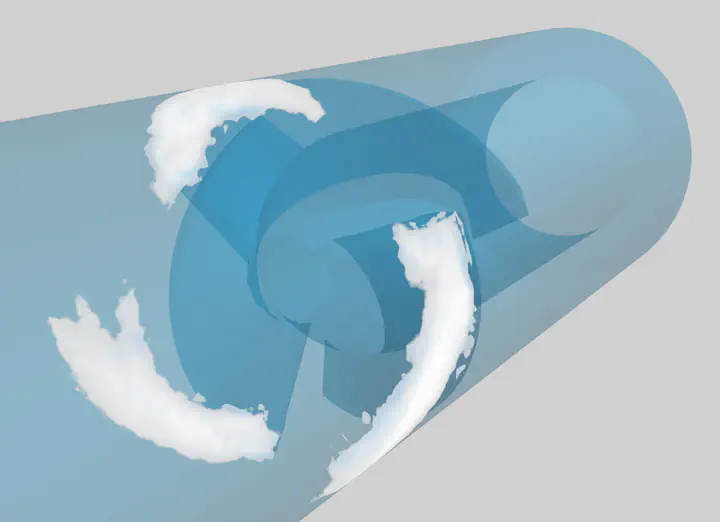 Cavitation on a three blades inducer
Cavitation on a three blades inducer
Abstract
In this study, cryogenic flows in rocket engine that may undergo a phase change because of a loss of pressure in pump, or any depressurization process are considered. We proposed a well-posed mathematical representation for this kind of flow as well as the numerical model for seeking the solutions. The two important points addressed in this study are the compressibility of the phases and the use of a rotating reference frame. The compressibility effects are quite essentials to obtain a physical and realistic cavitation model through the equation of state of the fluids (liquid and vapor), while the moving reference frame being the way we chose to model the pump motion. The model we develop is based on conservation equations of mass, momentum and energy for each phase plus a non-conservative equation evolution for the volume fraction. The description of the flow is based on the diffuse interface method, the interfaces appear naturally in the flow (interfaces between vapor and liquid for example) and do not require any interface tracking method. The phase change process is based on a stiff relaxation procedure using thermodynamic equilibrium considerations. Results related to a pump application are then presented using the open-source platform ECOGEN where the present numerical method is implemented. The model is able to produce a quite realistic pump characteristic curve where the relationship between the pump overpressure and its operating mass flow rate is expressed. In these first calculations it will be shown that cavitation may occur in some regions of the flow and that the multiphase approach is suited for this study.